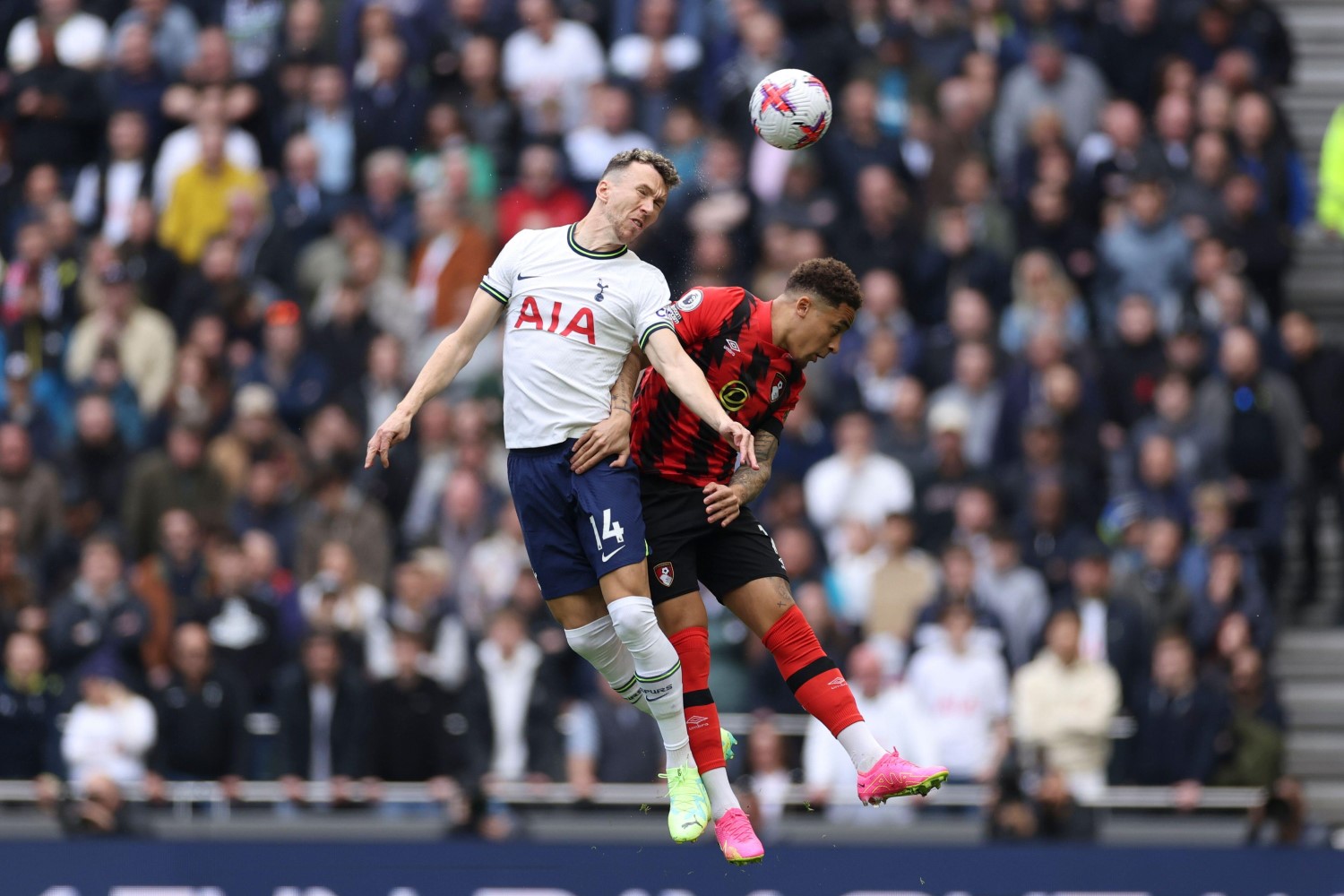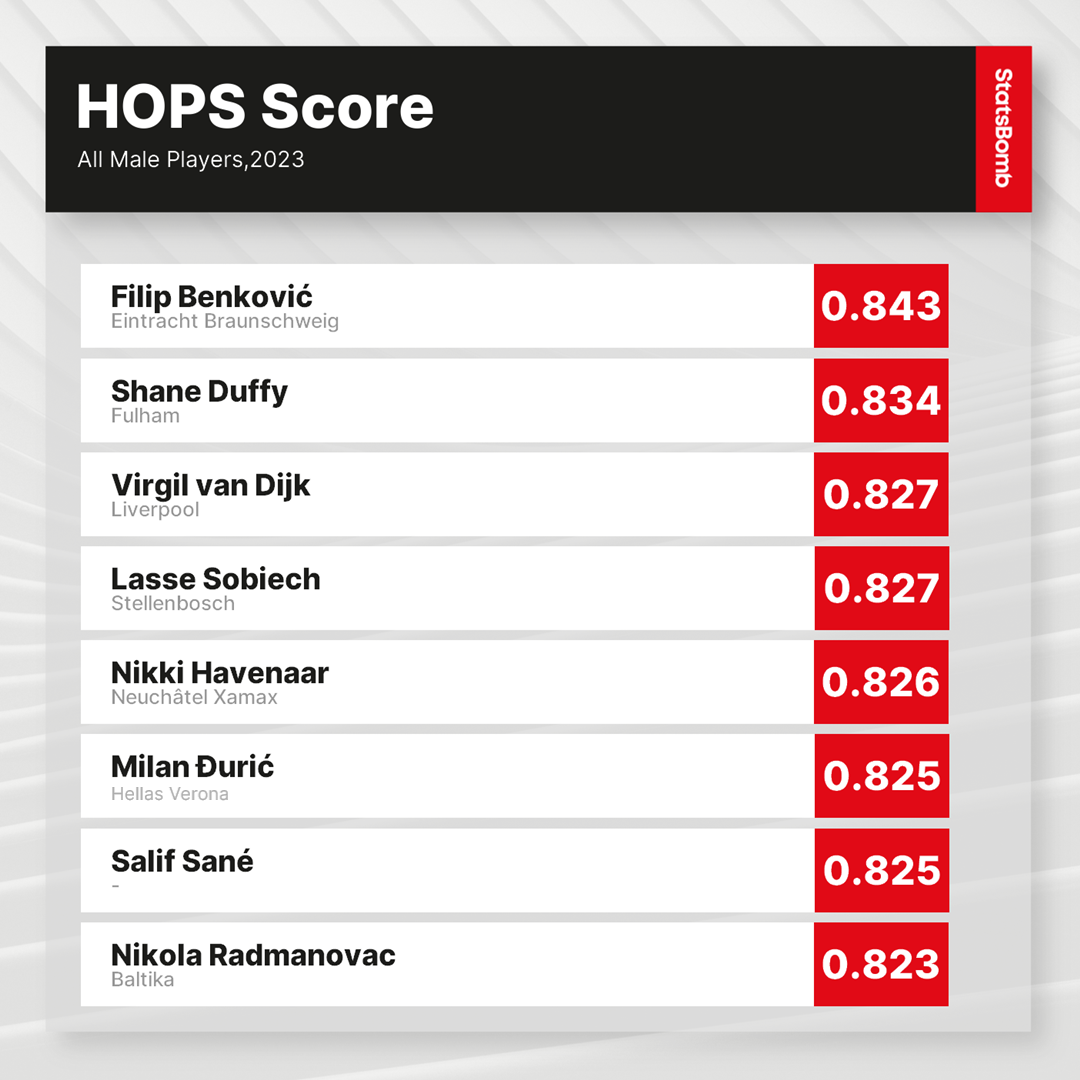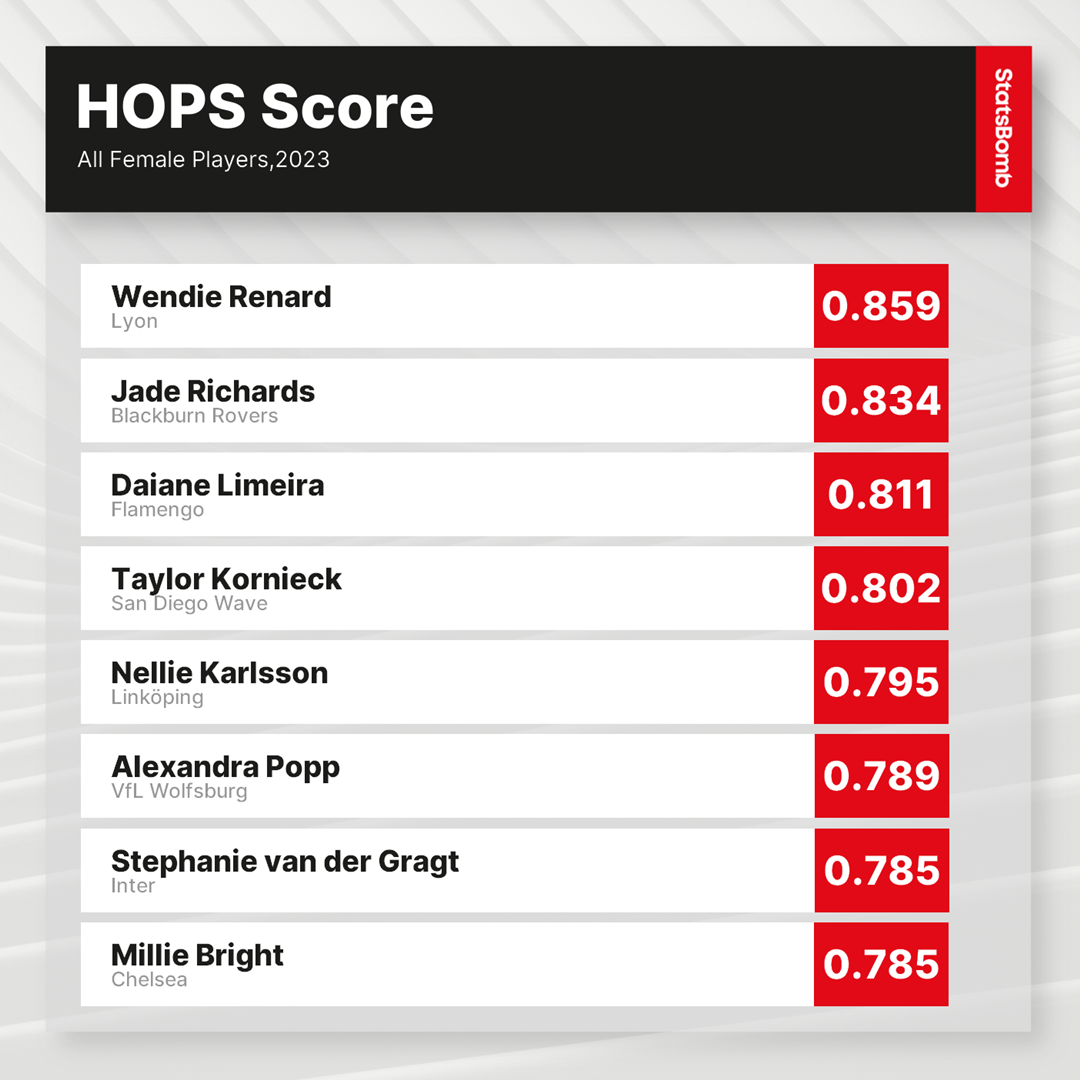Monday Night Football on Sky Sports, April 17th 2023. Jamie Carragher is in conversation with guest panellist and Brentford centre back Ben Mee.
"What if they had xH? Expected Headers you could win."
The premise behind the question was that Mee had, at the time, won the most headers in the Premier League this season, despite only being 6ft tall. Carragher related to this, not being the tallest centre back himself in his playing days, and the two discussed how reading the flight of the ball, aggression, and timing of the leap were arguably more important for winning headers than simply being tall.
At Hudl Statsbomb, we strive to improve knowledge of what's happening on the pitch for ourselves and our customers, and so it gives us great pleasure to introduce you to our latest model from our data science team.
HOPS: the Header Oriented Performance System.
The remainder of the article is an excerpt of the white paper for HOPS, made available to customers via our customer support tool, Hudl Statsbomb Assist.
HOPS is a model that measures a player's ability to win aerial duels.
Previously, we have offered two methods of measuring a player's aerial ability: Aerial Wins per 90 and Aerial Win %. Both provide some signal towards a player's true heading ability, but each has its flaws. Aerial Win % rewards players the same whether they beat Virgil van Dijk in the air or Lionel Messi, whereas Aerial Wins per 90 has an opportunity aspect and will punish players who don't get as many chances to compete in the air.
To mitigate these problems, we've developed HOPS to take into account the aerial ability of the opposing duellist in order to credit the winner of the duel appropriately. The model uses a modified version of the Glicko rating system, first developed by Mark Glickman to evaluate the performance of chess players, which weights recent duels more heavily than duels made in seasons past and also increases the uncertainty of the rating when a player goes a long time without making a duel, such as when a player suffers a serious injury.
The model output provides a HOPS rating, an upper bound, a lower bound, and a probability of winning a duel against an average player. When we present HOPS, we use the latter number – the probability of the player winning an aerial duel against an average player - this is the HOPS Score. So when you look at HOPS, presented on a scale of 0 to 1, a score of 0.75 would mean that the player would be expected to win an aerial duel against an average player 75% of the time. A score of 0.35 would mean we'd expect the player to win the duel 35% of the time, and so on and so on.
This approach feels more intuitive, making it easier to know if a player is good or bad, and it's also easier to explain the number to managers or coaches.
The Top 10 Players
So, without further ado, here are the top 10 male and female players across our entire dataset in May 2023, from over 60,000 players and 300+ competitions.
The lists are mostly made up of centre backs which is no surprise. We can plot the distributions by position to see this trend more clearly.
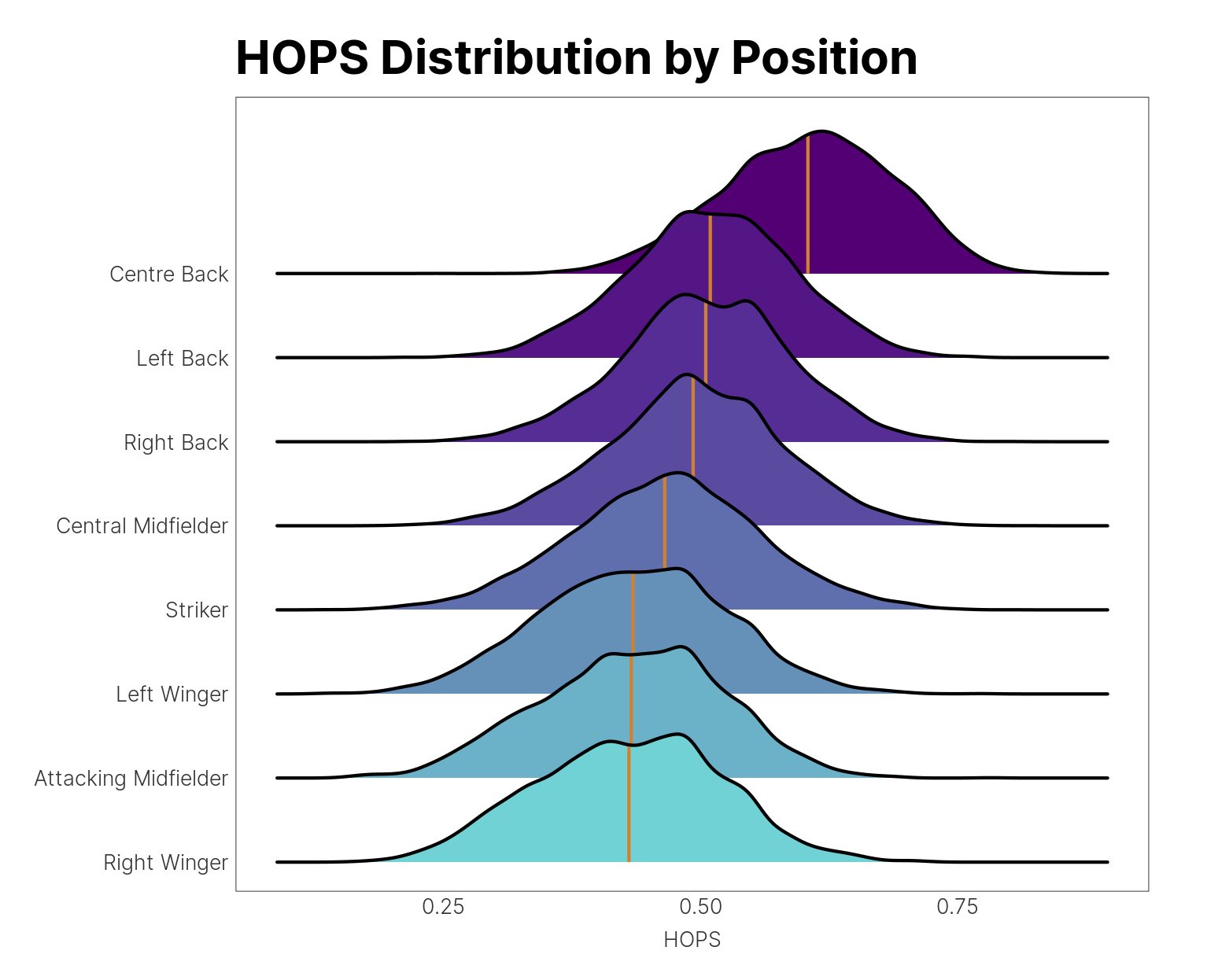
Are taller players better in the air?
We can also look at the relationship between player height and their ability to win aerial duels. As Carragher and Mee discussed, numerous other attributes are required to win an aerial duel, and several could be considered more important than height.
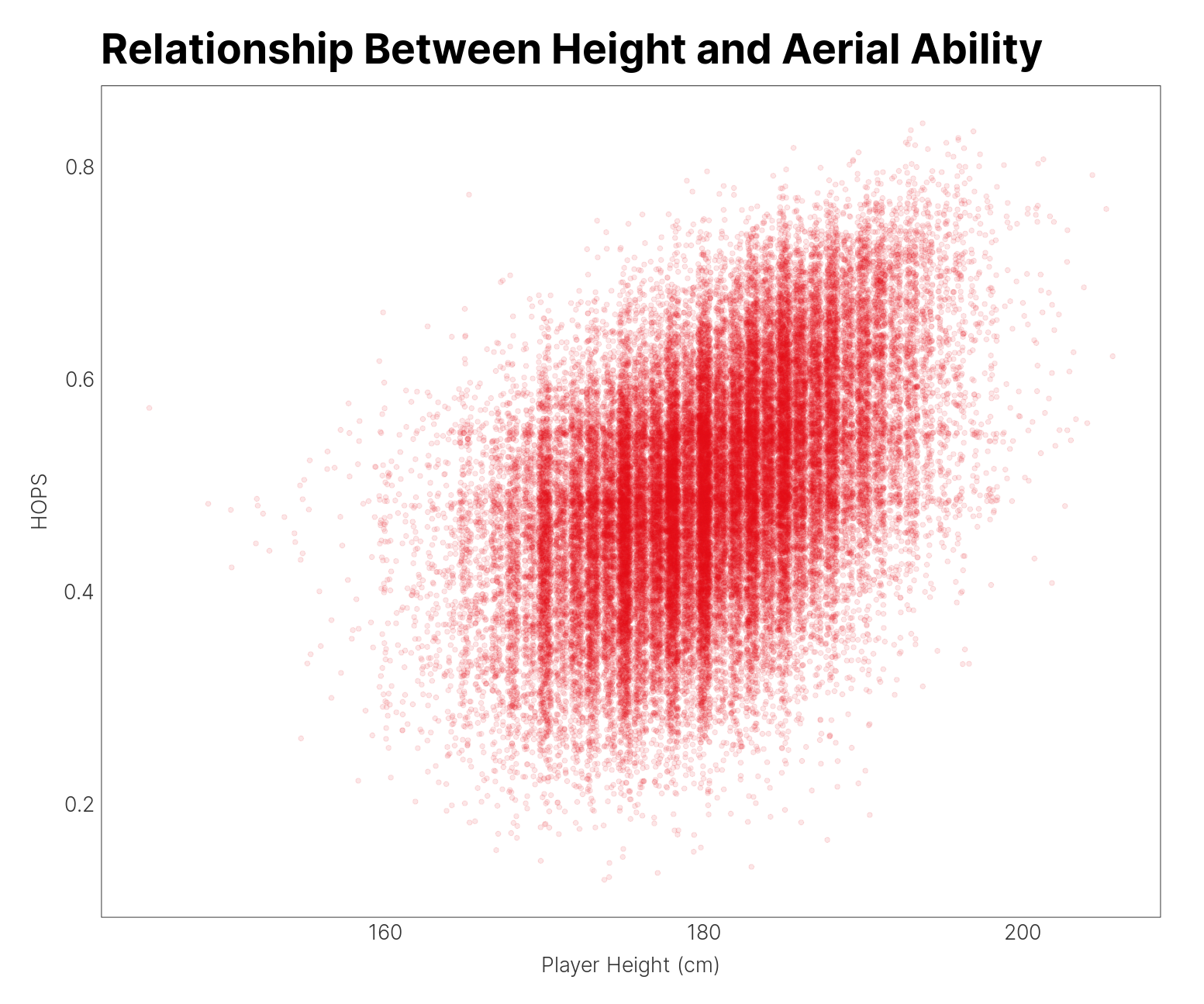
The two variables have a clear correlation, but it's perhaps not as strong as you might expect. Many players perform better in the air than players taller than they are, and vice versa. If we regress HOPS on player height, we find that 22% of the variation in HOPS score is accounted for by player height - there's more to it than just being tall. For each additional cm in height, we expect an increase in HOPS score of 0.007 (0.7% vs the average duellist) on average.
Case Study: Tammy Abraham vs Jordi Alba
To illustrate the benefits of using HOPS over the more standard Aerial Win %, we can look at how a player's percentile rank compares from one metric to another.
Tammy Abraham ranks in the 46th percentile for aerial duel win % (he wins just under half his duels – 43%). Under this lens, you might conclude that Abraham is a below-average duellist. Similarly, Jordi Alba ranks in the 41st percentile for Aerial Win %.
However, according to HOPS, Abraham is clearly the superior player in aerial duels. Abraham ranks in the 81st percentile for HOPS – indicating he's significantly better than average in the air – whereas Alba ranks in the 8th percentile. The reason is that Abraham is typically challenging much more difficult aerial opponents than Alba has to face. The average HOPS score of players Abraham meets is 0.65, and the average HOPS score of players Alba faces is 0.45. HOPS adjusts for the fact that Abraham is typically challenging against centre backs and Alba is usually picking off small wingers.
Case Study: Virgil van Dijk
So we've looked at the scores in a static sense, but part of the appeal of using the Glicko model for a metric like HOPS is how it allows us to see a player's rating and the changes in the certainty of the rating over time.
We've plotted van Dijk's rating over every season of Hudl Statsbomb data we have. Like all players, he starts with the standard rating, but the model quickly learns that van Dijk is exceptional in the air. You can see the confidence interval steadily decrease between 2017-2020 as the model gathers more data on him and we become more certain of his ability. However, when we get to the latter part of 2020, van Dijk suffers an ACL injury and doesn't register a duel for a considerable period – the confidence interval starts to increase again as we become more uncertain about van Dijk's ability in the air. When he eventually returns from injury, initially his rating drops quite a bit as he finds his feet again post-ACL rupture, but from mid-2021 to the present, we see him return to, and even surpass, his original levels and return to the top 10 players in the world.
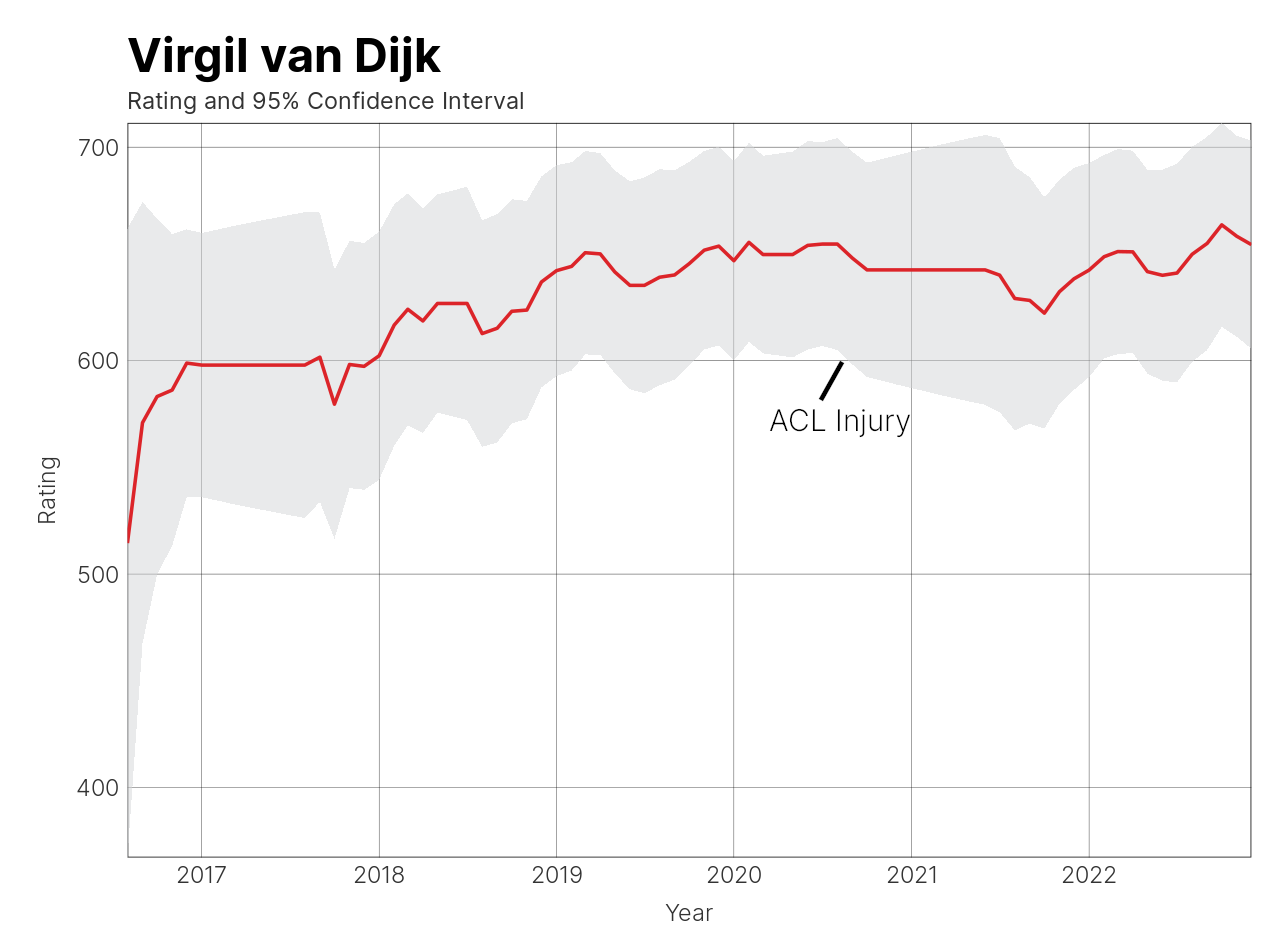
Conclusion
There are many practical applications for HOPS, most notably in opposition analysis and set-piece design and strategy, but also in player recruitment. We'll be back soon with more analysis to show HOPS in a more practical and applied setting.
We're always working to provide our customers with new and improved models, features and tools. HOPS is available to customers now via our customer support tool, Hudl Statsbomb Assist, and will soon be available in our analysis platform.
If you work for a team, media or gambling organisation and want to know more about what Hudl Statsbomb can do for your organisation, contact us today.
Or, if you want to read more work from Hudl Statsbomb, click here.

